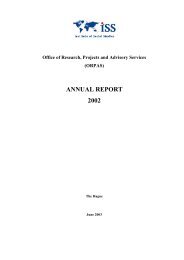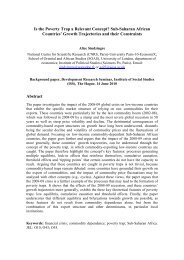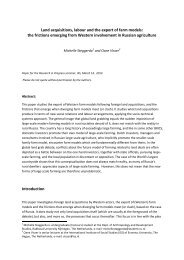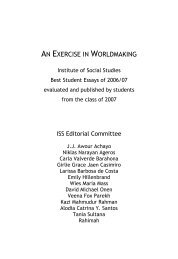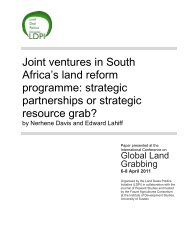AN EXERCISE IN WORLDMAKING 2009 - ISS
AN EXERCISE IN WORLDMAKING 2009 - ISS
AN EXERCISE IN WORLDMAKING 2009 - ISS
You also want an ePaper? Increase the reach of your titles
YUMPU automatically turns print PDFs into web optimized ePapers that Google loves.
11 The Interesting Facts Of The New Trade And Growth Theories 127<br />
to occur between these economies, and no potential gains from trade. In<br />
the presence of economies of scale, the larger the scale on which production<br />
takes place, the more efficient the production – i.e. doubling the inputs<br />
to production will more than double its output, while the notion of<br />
increasing return to scale means an increase in output that is proportionally<br />
greater than a simultaneous and equal percentage change in the use<br />
of all inputs, resulting in a decline in average costs. From the notions<br />
above we see that economies of scale refer to a firm's costs, and returns<br />
to scale describe the relationship between inputs and outputs in a long<br />
run production function.<br />
The assumption of increasing returns in the new trade theory gives<br />
rise to imperfectly competitive markets. Imperfect competition, in turn,<br />
makes possible the theoretical explanation of intra industry trade. Trade<br />
among countries with relatively similar endowments has been the fastest<br />
growing component of global trade flows throughout the post-War period.<br />
Even if countries had the same overall K/L ratio, their firms would<br />
continue to produce differentiated products and the demand of consumers<br />
would generate intra-industry trade. This phenomenon does not conform<br />
to the neo-classical paradigm, whereby the greater trading opportunities;<br />
the bigger the differences between the productive endowments<br />
of countries. Furthermore, a large proportion of trade among industrialized<br />
nations consists of two-way flows of very similar products. Such<br />
intra-industry trade is also difficult to accommodate within the neoclassical<br />
models, which predict that countries specialize in different sectors<br />
according to their comparative advantage and thus exchange different<br />
products. Intra-industry trade allows countries to benefit from larger<br />
markets. Countries produce fewer varieties of goods at a larger scale with<br />
higher productivity and lower cost. Consumers benefit from the increased<br />
range of choices. Intra-industry trade implies that a country can<br />
be an exporter as well as an importer.<br />
2.2 What Is the New Growth Theory?<br />
The new growth theory is a view of the economy which incorporates<br />
two important points: (i) viewing technological progress as a product of<br />
economic activity. Previous theories treated technology as a given, or a<br />
product of non-market forces. The new growth theory is often called<br />
“endogenous” growth theory, because it internalizes technology into a<br />
model of how markets function; (ii) holding that unlike physical objects,




